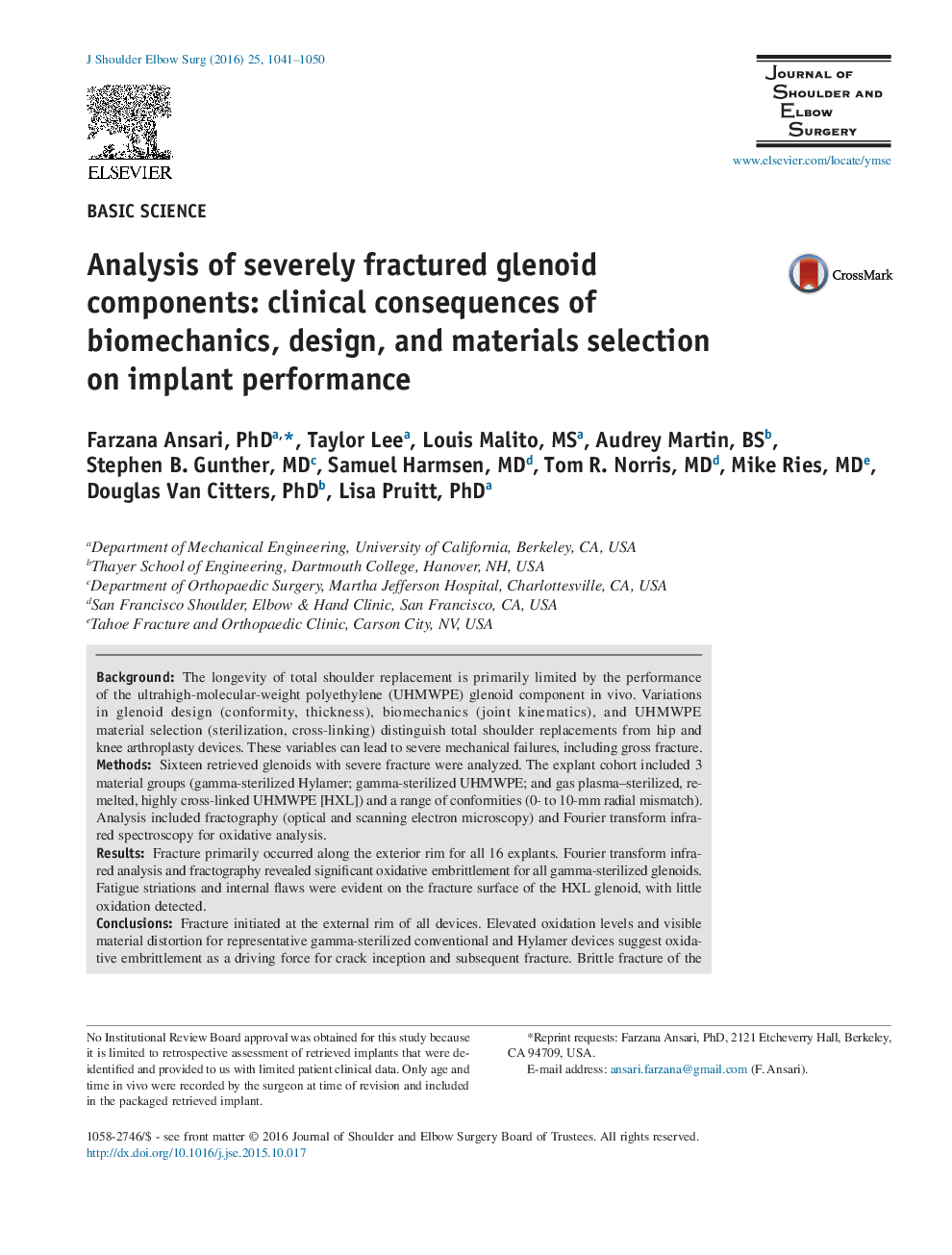| کد مقاله | کد نشریه | سال انتشار | مقاله انگلیسی | نسخه تمام متن |
|---|---|---|---|---|
| 4072964 | 1266967 | 2016 | 10 صفحه PDF | دانلود رایگان |
BackgroundThe longevity of total shoulder replacement is primarily limited by the performance of the ultrahigh-molecular-weight polyethylene (UHMWPE) glenoid component in vivo. Variations in glenoid design (conformity, thickness), biomechanics (joint kinematics), and UHMWPE material selection (sterilization, cross-linking) distinguish total shoulder replacements from hip and knee arthroplasty devices. These variables can lead to severe mechanical failures, including gross fracture.MethodsSixteen retrieved glenoids with severe fracture were analyzed. The explant cohort included 3 material groups (gamma-sterilized Hylamer; gamma-sterilized UHMWPE; and gas plasma–sterilized, remelted, highly cross-linked UHMWPE [HXL]) and a range of conformities (0- to 10-mm radial mismatch). Analysis included fractography (optical and scanning electron microscopy) and Fourier transform infrared spectroscopy for oxidative analysis.ResultsFracture primarily occurred along the exterior rim for all 16 explants. Fourier transform infrared analysis and fractography revealed significant oxidative embrittlement for all gamma-sterilized glenoids. Fatigue striations and internal flaws were evident on the fracture surface of the HXL glenoid, with little oxidation detected.ConclusionsFracture initiated at the external rim of all devices. Elevated oxidation levels and visible material distortion for representative gamma-sterilized conventional and Hylamer devices suggest oxidative embrittlement as a driving force for crack inception and subsequent fracture. Brittle fracture of theHXL glenoid resulted from a combination of elevated contact stress due to a nonconforming surface, an internal flaw, and reduced resistance to fatigue crack growth. This demonstrates that glenoid fracture associated with oxidation has not been eliminated with the advent of modern materials (HXL) in the shoulder domain.Level of evidenceBasic Science Study; Implant Retrieval Study
Journal: Journal of Shoulder and Elbow Surgery - Volume 25, Issue 7, July 2016, Pages 1041–1050
